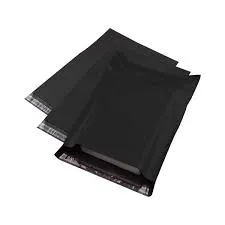Eco-Friendly Cellophane Bags for Sustainable Packaging Solutions and Waste Reduction
The Rise of Biodegradable Cellophane Bags An Eco-Friendly Alternative for a Sustainable Future
As environmental concerns continue to escalate, consumers and businesses alike are seeking sustainable solutions to reduce their ecological footprint. One innovative product that has emerged in this search for eco-friendliness is biodegradable cellophane bags. These bags serve as a promising alternative to traditional plastic packaging, offering numerous benefits for the environment and society as a whole.
The Rise of Biodegradable Cellophane Bags An Eco-Friendly Alternative for a Sustainable Future
One of the most noteworthy advantages of biodegradable cellophane bags is their capability to decompose into harmless materials. When these bags are disposed of in a composting environment, they can break down into water, carbon dioxide, and organic matter within months. This contrasts sharply with traditional plastic bags, which can persist for decades, contributing to the troubling accumulation of waste in landfills and oceans. By shifting to biodegradable alternatives, businesses and consumers can play a vital role in addressing the growing plastic pollution crisis.
biodegradable cellophane bags a3

Moreover, biodegradable cellophane bags often boast superior functionality compared to their plastic counterparts. They offer excellent barrier properties, preserving the freshness of food products while providing protection against moisture and contaminants. This makes them an ideal choice for various applications, including food packaging, retail, and personal care products. As more companies recognize the potential of biodegradable options, we can expect to see an increase in their use across different sectors.
The use of biodegradable cellophane bags also resonates with the contemporary consumer’s desire for sustainability. Many individuals are becoming more conscious of their purchasing decisions, opting for products that align with their values of environmental responsibility. By choosing biodegradable options, consumers can actively contribute to a circular economy, supporting manufacturers committed to eco-friendly practices. This shift not only enhances brand loyalty but also encourages other businesses to adopt sustainable packaging solutions.
However, it is essential to note that the effectiveness of biodegradable cellophane bags relies heavily on proper disposal. To ensure they break down effectively, these bags must be composted in industrial facilities that provide the necessary conditions for decomposition. Unfortunately, many consumers are unaware of the proper disposal methods, leading to confusion and potential environmental harm if the bags are discarded alongside regular plastic waste.
In conclusion, biodegradable cellophane bags present a viable and sustainable alternative to traditional plastic packaging. With their ability to decompose more quickly and their eco-friendly properties, they offer significant benefits for both the environment and consumers. As society continues to grapple with the consequences of excessive plastic use, embracing biodegradable options is a crucial step in creating a more sustainable future. However, for their full potential to be realized, public awareness and proper disposal methods must be prioritized. By working together, manufacturers, consumers, and policymakers can foster a greener world, ensuring that we leave a healthier planet for future generations.
-
The Best Uses for Small Trash Bags in Daily LifeNewsJul.01,2025
-
Stylish Reusable Grocery Bags TrendsNewsJul.01,2025
-
Shipping Advantages of Using Bubble Envelopes BulkNewsJul.01,2025
-
How Compostable Mailing Bags Reduce Environmental ImpactNewsJul.01,2025
-
Environmentally - Friendly Bulk Poly MailersNewsJul.01,2025
-
Eco Friendly Custom Laminated Tote BagsNewsJul.01,2025
-
Have the freedom of customizing your custom mailers any way you want! Our dedicated packaging support will help deliver you the mailing experience you need to elevate your shipping experience to the next level! Start making a strong impression on your customers and stand out from your competitors! -
LIYA uses high quality raw materials which directly purchased from large enterprises domestic and overseas such as PetroChina, Sinopec, Sabic, Equate, ExxonMobil, Dow Chemical, Total, and Borouge, ensuring the price advantage and quality of the raw materials. -
LIYA uses high quality raw materials which directly purchased from large enterprises domestic and overseas such as PetroChina, Sinopec, Sabic, Equate, ExxonMobil, Dow Chemical, Total, and Borouge, ensuring the price advantage and quality of the raw materials.
Warning: Undefined array key "ga-feild" in /home/www/wwwroot/HTML/www.exportstart.com/wp-content/plugins/accelerated-mobile-pages/templates/features.php on line 6714





